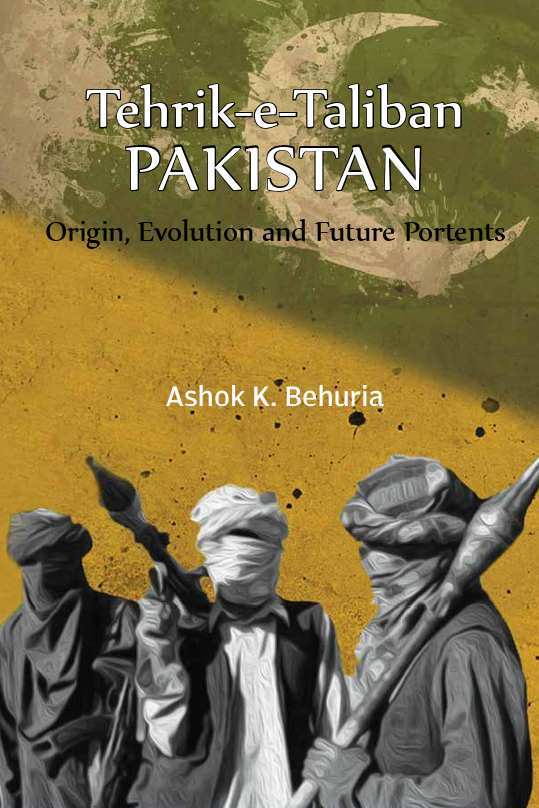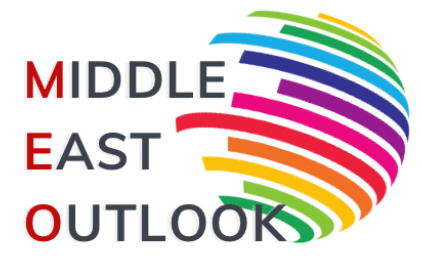
Once it became an independent nation in 1947, Pakistan was faced with the daunting task of building a nation. This was compounded by the fact that, in contrast to other nationalist movements driven by local histories and common struggles, the ‘Pakistan movement’ was more of a North Indian and elitist movement. It mobilised Muslims around the abstract idea of a separate homeland and, in doing so, somehow failed to take into account the linguistic, cultural, and regional diversities existing in the specified territories that came to constitute Pakistan. Additionally, the Muslim diversity of the Indian subcontinent did not form a coherent national imagination. Consequently, since its inception, Pakistan’s state-building exercise was saddled with sub-national movements such as Balochi, Bengali, Sindhi and Pashtun, which were all deeply rooted in their respective cultural, linguistic, and territorial nexus. These rival identities made it difficult to forge an umbrella Pakistani identity, and their competition over time got intertwined with non-elected institutions coming to power and continuing violence and extremism. Whereas Pakistan succeeded, sometimes tardily and unevenly, to suppress provincial separatism and create some semblance of democratic institutions, these have been weaker institutions, with the core danger of terrorism unresolved.
At the heart of Pakistan’s crisis lay a paradox. Although Islam had served as the glue to mobilize Muslims for the Pakistan movement’s envisioned separate Muslim homeland, but once the country came into being, it proved insufficient to accommodate the diversity within its borders. Political power largely concentrated in the hands of the ‘muhajirs’ (Muslims who migrated from India to Pakistan) and Punjabis, resulting in the alienation of the people in the peripheries by neglecting their political and cultural aspirations. Instead of addressing their apprehensions, the state resorted to coercion to integrate these groups, deepening alienation and generating security challenges that continue to date. It is in this context that Ashok K. Behuria’s book, Tehrik-e-Taliban Pakistan: Origin, Evolution and Future Portents, interrogates the structural contradictions of the Pakistani state and their intersection with the rise of radical Islamist militancy. Unlike descriptive accounts that simply narrate the Taliban’s emergence, Behuria, drawing heavily from Pakistan’s vernacular media and the literature produced by jihadist organizations, situates the Tehrik-e-Taliban Pakistan (TTP) in Pakistan’s larger political genealogy, linking the state’s contested nation-building project with the entrenchment of violent extremism.
The book engages with questions such as why Pakistan’s tribal population along its Afghan border oppose the Pakistani state and seeks an Islamic sharia-based governance setup, and how Pakistan normalize such elements in the first place, overlooking the rise of radical forces early on. Behuria further explains the impact of the US “War on Terror” in fueling radicalization and terrorism in Pakistan, while also examining the impact of 9/11 on terrorist groups in the tribal areas. At the same time, he argues that the people in these areas already had a predisposition toward conservative systems. Tracing this genealogy, the book retraces the debate to the country’s formative years, when its leadership used Islamic imagery and stoked fears of ‘Hindu domination’ to sustain the ideological aspiration for Pakistan —a tactic to weld together people divided along ethnic, regional, and cultural lines, but one that proved to be a failed imagination.
Behuria’s analysis of the tribal peripheries is particularly incisive, providing an exhaustive socio-political account of the region, then known as the Federally Administered Tribal Areas (FATA) until 2018. His treatment of FATA highlights how the colonial-era administrative setup, controlled through political agents and represented by local collaborators called maliks or lungidars, entrenched political vacuums and hindered integration (p. 11). Rather than empowering the people of FATA through representative mechanisms, the Pakistani state’s continuation of the British enacted Frontier Crimes Regulations (FCR), beyond the purview of country’s judicial system perpetuated alienation This structural neglect, Behuria shows, created fertile ground for jihadist influence, a point that resonates with scholarship on state failure and ungoverned spaces (p. 10).
The book highlights how the socio-political dynamics of the region changed in the 1980s, when areas stretching from FATA to northern Baluchistan became a destination for Afghan refugees and mujahideen (p. 27). Moreover, as Pakistan joined the US-backed and Gulf-financed Afghan Jihad against the Soviets in Afghanistan, its Inter-Services Intelligence (ISI) established a network of madrassas in the region where youth were indoctrinated with jihadist ideology. These young recruits, after such training, were then sent to fight Soviet communist forces in Afghanistan (p.27). After the withdrawal of Soviet Russians from Afghanistan in 1989, these madrassa-trained fighters joined forces with Mullah Omar-led Afghan Taliban in the mid-1990s, helping the group establish the Islamic Emirate of Afghanistan in 1996, which ruled the country till its removal by the American invasion in 2001. These predominantly tribal fighters moved easily across the largely porous Pakistan-Afghanistan border, with the Pakistani state not only overlooking it but, in effect, facilitating such cross-border jihadi movement for what was termed as cultivating ‘strategic depth’ in Kabul. Ironically, this boomeranged into ‘reverse strategic depth’ as pro-Taliban groups entrenched themselves in Pakistan’s tribal regions. As such, the state’s facilitation of cross-border jihadi movement during the anti-Soviet Afghan jihad may have served its short-term security calculus, but it entrenched radical networks that turned inward.
The 2001 US invasion of Afghanistan, following the 9/11 attacks, in pursuit of the Al Qaeda leadership led by Osama Bin Laden, dramatically altered the Pakistani state-Afghan Taliban status quo as Islamabad joined the US-sponsored ‘War on Terror’. The book highlights that though the Pakistani government initially attempted to persuade locals to apprehend Afghan Taliban members, Al-Qaeda operatives, and other foreign militants, the tribal people refused (p. 34). The author identifies multiple reasons for this situation: before 9/11, jihadis were revered as legends, many foreign fighters had married into local tribes, and those fleeing Afghanistan had built strong economic and social stakes locally. For the tribes, defying the Pakistani state became almost a duty (p.35). Thus, the bond between locals and militants deepened.
The book also engages with the ideological dimension of radicalization in its latter part. The author argues that Pakistan’s present-day challenges, including terrorism, stem directly from its evolution as an ideological state. Behuria contends that the space conceded by Pakistan’s political elite to Islamist demands legitimized the role of religion in politics in ways that undermined democratic consolidation (p. 170). The institutionalization of the Constitution through the Council of Islamic Ideology (CII) in 1962 and the military’s strategic alliance with Islamists, particularly under General Ziaul Haq, entrenched religious authority in statecraft. The Pakistan Army recognized the value of Islamists even before Gen. Zia-ul-Haq’s coup d’état. In this sense, Behuria echoes Husain Haqqani’s argument (2010) that Pakistan’s military-Islamist nexus was not accidental but structural, aimed at countering India’s regional influence.
The end of the Afghan war in 1989 had severe consequences for Pakistan as victorious mujahideen returned emboldened, with weapons proliferating across the country with ease. More importantly, returnees from the war—having defeated the Soviets—sought new battlegrounds, both within Pakistan and abroad. In December 2007, various pro-Taliban groups from the tribal areas coalesced to form the Tehrik-e-Taliban Pakistan (TTP), seeking sharia law implementation in Pakistan (p. 87). Ever since, this umbrella organization continues to pose a serious national security challenge for Pakistan by conducting lethal attacks in FATA (merged into Khyber Pakhtunkhwa in 2018) and across the country. Some of TTP’s grisly attacks include ex-Prime Minister Benazir Bhutto’s 2007 assassination, the Lahore police academy attack of 2009, and the 2014 fatal massacre at the Army Public School Peshawar. Although wide counterterrorism operations of the Pakistan Army like Operation Zarb-e-Azb (2014) and Operation Radd-ul-Fasaad (2017) helped curtail TTP to some degree, religious radicalism has deep roots in Pakistan, where thousands of TTP fighters still operate from the Afghan border.
Nevertheless, the prescriptive component of the book, advocating for a long-term solution to eradicate the breeding grounds of terrorism and extremism, is both normatively compelling and politically challenging. Behuria, who has closely followed TTP and Pakistani politics, argues that peacebuilding requires a ‘de-emphasis’ on Islam as a ‘major referent’ of state identity and the protection of diversity through liberal democratic frameworks (p. 190). Although theoretically persuasive, in its appeal for inclusive statecraft, this proposal raises questions of political feasibility, especially in a country where religion is institutionally embedded in both state and society. Nevertheless, such appeals for inclusive governance highlight the book’s forward-looking orientation and distinguish it from more fatalistic representations of extremism in Pakistan.
Overall, Tehrik-e-Taliban Pakistan: Origin, Evolution and Future Portents is a significant scholarly intervention bridging scholarship on Pakistan’s ideological foundations with the contemporary dynamics of terrorism. Its analytical strength lies in showing how the Pakistani state’s contradictions have reproduced insecurity rather than stability. This makes it a significant contribution to the current literature on religious radicalism and terrorism in Pakistan.
The views expressed are the author’s own.
